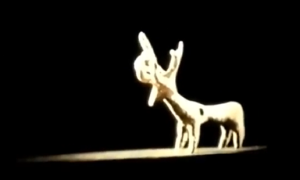Between Fire and Mirror: Ibrāhīm Gulistān’s Cinematic Journey
Published in Cinema Iranica
Abstract
This article examines the cinematic legacy of Ibrāhīm Gulistān and explores how his innovative fusion of poetic narration and documentary realism challenged dominant representations of modernity, power, and national identity in Pahlavī-era Iran. Through close analysis of key films such as A Fire (Yak Ātash, 1961), Wave, Coral, and Rock (Mawj, Marjān, Khārā, 1962), The Hills of Mārlīk (Tappah-hā-yi Mārlīk, 1963), Brick and Mirror (Khisht va Āyinah, 1965), and The Secrets of the Treasure of the Jinn Valley (Asrār-i ganj-i darrah-yi jinni, 1974), the study employs a historical-critical and cognitive methodology to investigate how Gulistān used visual metaphor, symbolic language, and commissioned platforms to subvert institutional narratives and embed layered critiques. The findings reveal that Gulistān’s films transcended traditional boundaries between documentary and fiction, combining lyrical aesthetics with philosophical and political inquiry. His cinematic strategies not only laid the intellectual and stylistic groundwork for the Iranian New Wave but also modeled a form of artistic resistance within authoritarian and commercial frameworks. The article concludes that Gulistān’s work remains a vital contribution to Iranian cinema, offering a compelling example of how film can function simultaneously as poetic expression, historical reflection, and cultural critique.
 Sadeghi, L. (2025). Between Fire and Mirror: Ibrāhīm Gulistān’s Cinematic Journey. In Cinema Iranica. Encyclopaedia Iranica Foundation https://cinema.iranicaonline.org/article/between-fire-and-mirror-ibrahim-gulistans-cinematic-journey/
Sadeghi, L. (2025). Between Fire and Mirror: Ibrāhīm Gulistān’s Cinematic Journey. In Cinema Iranica. Encyclopaedia Iranica Foundation https://cinema.iranicaonline.org/article/between-fire-and-mirror-ibrahim-gulistans-cinematic-journey/